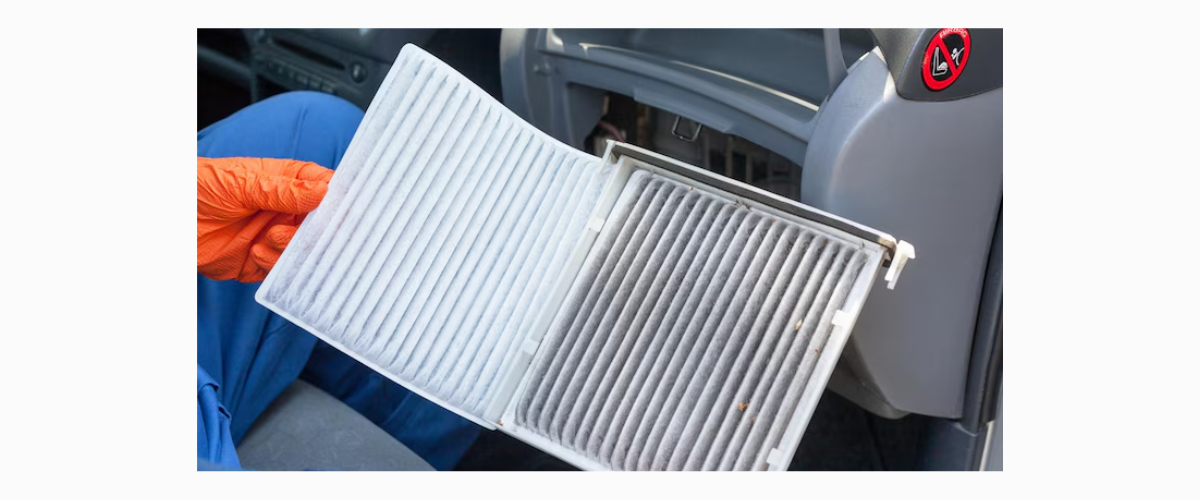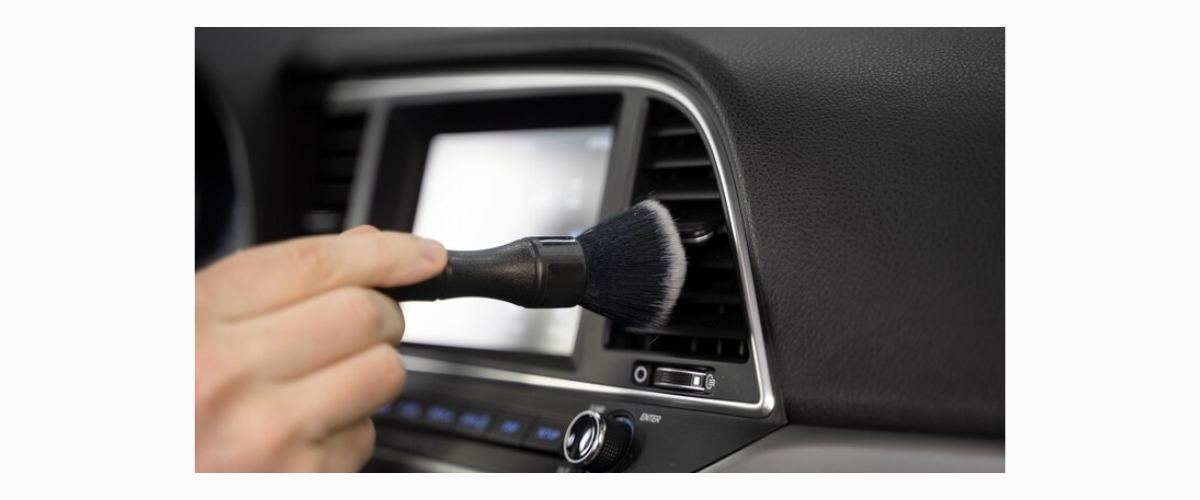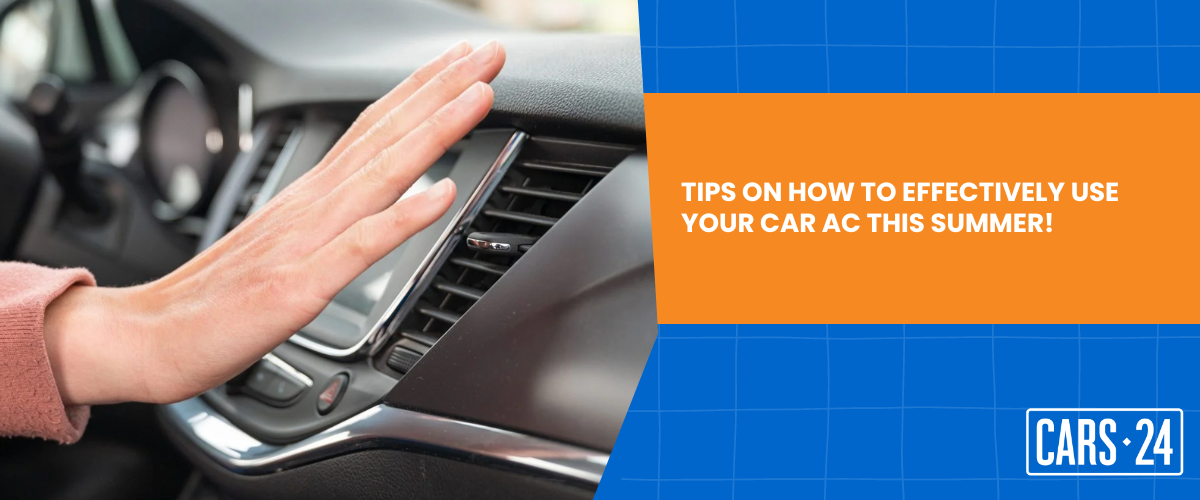Summer! The season of warmth, watermelons, beach trips, road trips, and of course, hot and sweaty car rides. But dont be alarmed, for we have some tips on how to effectively use your car AC this summer and beat the heat in style. Whether youve been driving your car for decades or youre just getting started, knowing how to operate your car AC efficiently is very important to stay cool, comfortable, and confident during those long drives.
By the end of this post, you will be able to keep your cool even when the temperature rises. So, buckle up, roll your sleeves, and lets get started!
How does the AC in a car work?

Its crucial to know how your cars AC works and what its main components are to ensure optimal performance and longevity. In simple terms, your cars AC system works by removing excess heat and moisture from the air inside your car, leaving you with cool and refreshing air. The AC system is made up of several key components, including the compressor, condenser, expansion valve, evaporator, receiver-dryer, and refrigerant.
Think of the compressor as the heart of your cars AC system. It compresses the refrigerant gas and pumps it to the condenser, where it is cooled down and converted into a liquid. The condenser is a heat exchanger which is located at the front of your car, and its purpose is to remove the heat from the refrigerant. The cooled liquid refrigerant then flows to the expansion valve, which regulates the flow of refrigerant between the evaporator and the condenser.
The evaporator is located inside your cars dashboard and absorbs the heat and moisture from the air inside your car, leaving you with cool and dry air. The receiver-dryer is located between the condenser and the expansion valve and removes any moisture or debris that may be present in the refrigerant.
The refrigerant is a gas that is responsible for absorbing and releasing heat, and it is the primary working fluid in your cars AC system. It flows through the system, changing states from a gas to a liquid and back again, as it absorbs and releases heat.
Keeping your AC system in good shape

Your cars AC helps keep you cool and comfortable during those fiery hot summer months, so its important to keep it well-maintained. Here are some top tips to keep your AC system running efficiently:
- Regularly check your cars refrigerant levels
Low refrigerant levels can lead to poor AC performance and can even cause damage to the compressor. If you notice that your AC isnt blowing cold air as it should, it may be time to check your refrigerant levels.
You can check your car’s refrigerant levels on your own by locating the low-pressure port, using an AC pressure gauge to check the pressure, and adding refrigerant if needed. If unsure, seek professional help.

- Regularly replace your cars air filter
A dirty air filter can restrict airflow to the evaporator, which can hamper the AC performance. We recommend replacing your air filter every 12,000 miles or every 12 months, whichever comes first.
- Keep your condenser clean
The condenser is located at the front of your car, and it can get clogged with dirt, dust, and debris, hindering its ability to cool the refrigerant. Regularly cleaning your condenser with a gentle hose or air compressor can help keep it running smoothly.
In addition to these three tips, you should also get your cars AC system serviced regularly. The service might include checking for leaks, replacing worn-out parts, and refrigerant top-up if necessary. By keeping up with regular maintenance, you can ensure that your cars AC system runs efficiently.
Using your AC efficiently
From meal preps to PowerPoint presentations, efficiency has always been the mantra. The same goes for the AC system of your car. Keeping that in mind, lets quickly discuss how to use the AC system efficiently to keep your car cool.
- Avoid immediate AC use: Just like running a marathon without training can cause stress and damage, immediately blasting the AC after getting in a hot car can strain the system. Open windows or sunroof first to let out hot air before turning on the AC.
- Use recirculation feature: Recirculating cool air within the car instead of drawing in hot air from outside saves energy and reduces strain on the AC system. This helps cool the air more efficiently.
- Park in the shade: Parking in the shade keeps the car’s interior cooler, reducing the need for the AC to run continuously. If shade isn’t available, use a sunshade to block sunlight and reduce heat buildup.
Maximising your cars cooling potential
Driving in hot weather can be a gruelling and uncomfortable experience, both for you and your beloved car. But with a few simple strategies, you can maximise your cars cooling potential. Here are five tips for making the most of your cars AC system:

- Park in the shade
Parking your car in the shade or away from direct sunlight, whenever possible, will help reduce the strain on your AC system and make it easier to cool the cabin once you get back in the car.
- Use sunshades
Sunshades are designed to block out the suns rays, preventing the cars interior from heating up too quickly. You can also use sunshades for the rear windows and sunroof, to prevent your car from getting heated up.
- Crack the windows
Cracking the windows before turning on the AC can help release some of the hot air trapped inside the car, making it easier for the AC system to cool the air more quickly and efficiently.

- Use recirculation mode
Using the recirculation mode on your AC system can help cool the air inside the car more quickly. This mode circulates the cool air already in the cabin, rather than pulling in hot air from outside.
Service your AC system
Regularly maintaining your AC system, checking the refrigerant levels, replacing the air filter, and keeping the condenser clean help keep your AC system in good shape and maximise its cooling potential.
Staying safe while using your AC
Unless youre a melon, it is quite difficult to thrive in the summer. As much as we all love a cold beverage and some cool breeze in the hot summer months, its also important to have your cars AC system running safely and efficiently before the temperature rises. Here are safety concerns to keep in mind:
- Carbon monoxide poisoning
A dysfunctional AC system can lead to a build-up of carbon monoxide in the cabin. Carbon monoxide is a colourless, odourless gas that can be lethal if inhaled in large quantities. To avoid this, make sure your AC system is regularly serviced and that there are no leaks in the exhaust system.
- Distraction
Adjusting your AC settings while driving is a distraction and can take your attention away from the road. To avoid this, set your AC before starting your journey or have your fellow passenger adjust it for you.
- Reduced visibility
Prolonged AC use can lead to a build-up of moisture on the windows of your car, leading to reduced visibility. To avoid this, periodically clean your windows and use the defrost function whenever necessary.
- Allergies
The AC system can circulate allergens, pollen, and pollutants from outside, causing allergies and respiratory problems. It is recommended to regularly change your air filter to reduce the risk of allergies.
- Electrical hazards
Faulty electrical connections in your cars AC system can lead to electrical hazards and fires. Have your AC system checked by a qualified technician to avoid any mishaps.
- Overuse
Overusing your cars AC system strains the engine and reduces its fuel efficiency. To avoid this, use the AC system only when necessary, take regular breaks, and occasionally roll down the windows to allow your cars engine to cool down.
Common AC problems and how to troubleshoot them
Car AC systems are prone to a variety of issues that could sprout up when youre least expecting them to. Here are seven common problems that you may experience with your cars AC system, with some tips to diagnose and fix them:
- Weak Airflow
If the air blowing from the vents is weak, it could be due to a clogged air filter, a malfunctioning blower motor, or a blockage in the ductwork. Check the air filter and clean or replace it if necessary. If the issue persists, have a professional inspect the AC system.
- Strange Smells
If theres an unpleasant odour coming from the AC vents, it could be due to mould or bacterial growth in the system, a clogged air filter, or a malfunctioning evaporator. Try cleaning or changing the air filter and using a disinfectant spray.
- No Cool Air
If the air coming from the vents is not cold, it could be due to a refrigerant leak, a malfunctioning compressor, or a blocked or damaged condenser. Have a professional inspect the system and repair or replace any damaged parts.
- Strange Noises
Unusual sounds coming from the AC system, such as whirring, grinding, or squealing, could indicate a problem with the compressor, blower motor, or fan. It is recommended to promptly identify and fix the issue.
- Leaking Refrigerant
If the refrigerant level of your cars AC system is low or constantly needs to be topped up, it could indicate a leak in the system. Have a professional inspect the AC system and repair any leaks to get the most out of your cars AC.
- Electrical Issues
If the AC system is not turning on or is behaving erratically, it could be due to a faulty switch, relay, or wiring. Inspecting the electrical components and repairing or replacing any damaged parts should resolve this problem.
- Hot Air on One Side
If the air on one side of the AC is cold while the other side is hot, it could be due to a blocked or damaged blend door or faulty actuators. Have a professional inspect the system and repair or replace any damaged parts.
Conclusion
As the days get longer and the temperature keeps rising, keeping your car cool and comfortable becomes one of the most important tasks on your to-do list. Whether youre going on a road trip or just commuting to work, a well-functioning AC system can make all the difference. By following our tips on how to effectively operate your car AC this summer, youll be cool, confident, and cruising in comfort in no time.
FAQs
1. How do I keep my car AC cool in the summer?
You can park in the shade, use sunshades on the windshield, and crack the windows before getting in the car to keep your cars AC cool in the summer.
2. Which mode is best for AC in summer?
Recirculation mode, which recirculates the air inside the car rather than bringing in hot air from outside, is usually considered the best mode for AC in the summer. This mode helps the AC system cool the car faster and more efficiently.
3. How to increase airflow in a car?
Increasing airflow in a car can be done by cleaning or replacing the air filter, ensuring that the vents are not blocked, and checking for any obstructions in the system. Its also important to make sure that the fan is working properly and set to the highest speed.
4. How to use a car AC more efficiently?
To use your cars AC efficiently, you can park in the shade whenever possible to reduce the amount of heat that builds up inside the car. You can also roll down the windows when you first get in the car to let the hot air escape before turning on the AC. Once the car is cool, use the recirculation mode and set the temperature to a comfortable level.

Comments
New Comment